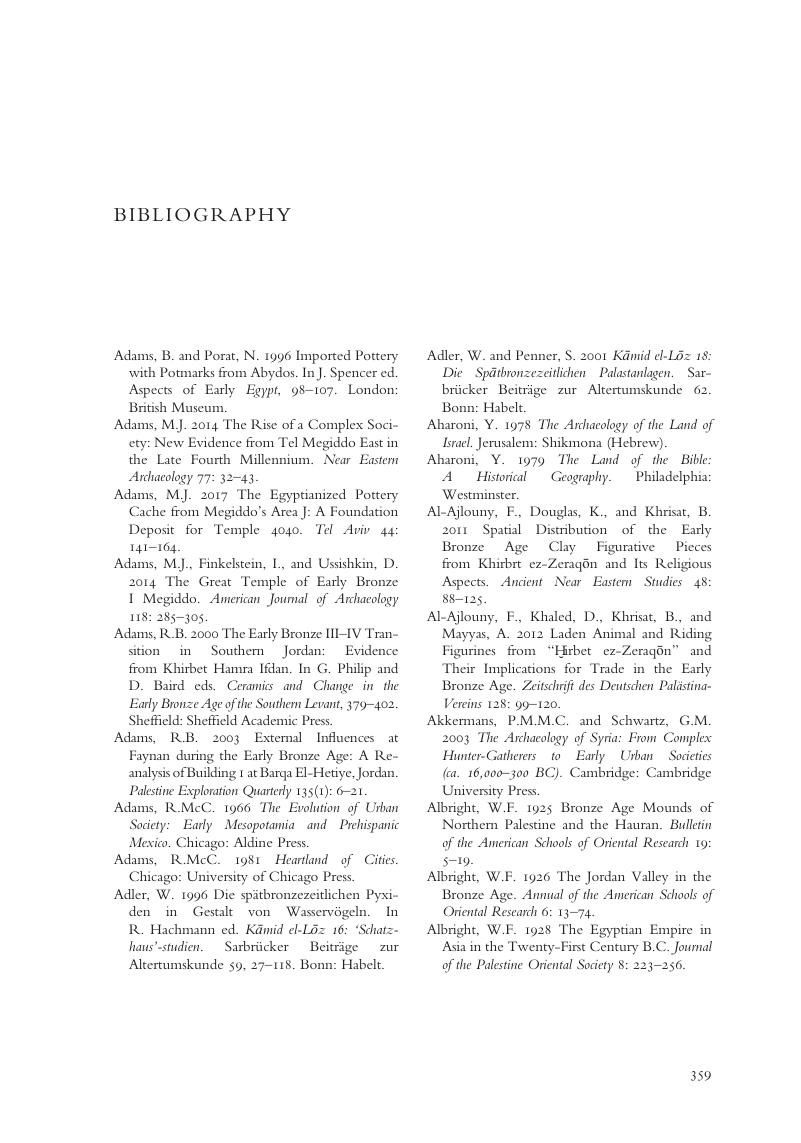 The Archaeology of the Bronze Age Levant
The Archaeology of the Bronze Age Levant Book contents
- The Archaeology of the Bronze Age Levant
- Cambridge World Archaeology
- The Archaeology of the Bronze Age Levant
- Copyright page
- Dedication
- Contents
- Illustrations
- Preface
- Chapter 1 Introduction
- Chapter 2 Villages and the Growth of Social Power in the Early Bronze I
- Chapter 3 Urbanism and Its Demise in the Early Bronze II and III
- Chapter 4 The Intermediate Bronze Age
- Chapter 5 Villages, Manors and Integrated City-States of the Middle Bronze Age
- Chapter 6 The Late Bronze Age
- Chapter 7 Conclusion
- Bibliography
- Index
- References
Bibliography
Published online by Cambridge University Press: 21 October 2019
- The Archaeology of the Bronze Age Levant
- Cambridge World Archaeology
- The Archaeology of the Bronze Age Levant
- Copyright page
- Dedication
- Contents
- Illustrations
- Preface
- Chapter 1 Introduction
- Chapter 2 Villages and the Growth of Social Power in the Early Bronze I
- Chapter 3 Urbanism and Its Demise in the Early Bronze II and III
- Chapter 4 The Intermediate Bronze Age
- Chapter 5 Villages, Manors and Integrated City-States of the Middle Bronze Age
- Chapter 6 The Late Bronze Age
- Chapter 7 Conclusion
- Bibliography
- Index
- References
Summary

- Type
- Chapter
- Information
- The Archaeology of the Bronze Age LevantFrom Urban Origins to the Demise of City-States, 3700–1000 BCE, pp. 359 - 408Publisher: Cambridge University PressPrint publication year: 2019
